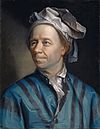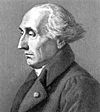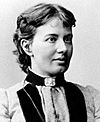Lagrange, Euler, and Kovalevskaya tops facts for kids
Imagine a spinning top or a gyroscope. In physics, understanding how a rigid object like this spins and moves under gravity can be very tricky. It's often hard to predict its exact path.
However, there are three special types of tops whose motion we can predict perfectly. These are called the Euler, Lagrange, and Kovalevskaya tops. They are named after the famous mathematicians who studied them. For each of these tops, there are certain values that always stay the same as the top spins. These unchanging values help scientists understand and predict their motion.
The Euler top describes a top spinning freely without any outside forces pushing or pulling it. Its fixed point is its center of gravity. The Lagrange top is a special kind of symmetric top. This means it looks the same if you spin it around a certain axis. Its center of gravity is right on this symmetry axis.
The Kovalevskaya top is another special symmetric top. It has a unique shape where two of its "moments of inertia" (which describe how hard it is to make something spin) are equal, and the third is half that size. Its center of gravity is in a flat area perpendicular to its symmetry axis. There's also the Goryachev–Chaplygin top, which is also predictable. Scientists have proven that these are the only types of tops that can be perfectly predicted in this way.
Euler Top: The Free Spinner
The Euler top is like a top spinning in space, far away from any gravity or air resistance. It doesn't have any outside forces (like a push or pull) acting on it.
For the Euler top, the important things that stay constant are its total energy and its angular momentum. Angular momentum is a measure of how much an object is spinning and in what direction. Because these values don't change, we can easily predict how the Euler top will move.
Lagrange Top: The Balanced Spinner
The Lagrange top is named after Joseph-Louis Lagrange. This top is special because it's perfectly balanced. Its center of gravity is exactly on its main spinning axis. Think of a perfectly balanced spinning top that's standing upright.
For the Lagrange top, several things stay constant. These include its total energy, the amount of spin along its main axis, and its angular momentum in the vertical direction. The size of its "n-vector" (which helps describe its orientation) also stays the same. These constant values make its motion predictable.
Kovalevskaya Top: The Prize-Winning Spinner
The Kovalevskaya top was discovered by Sofya Kovalevskaya, a brilliant mathematician. She found this special top in 1888, and her work won a big prize from the French Academy of Sciences.
This top is symmetric, but its unique feature is the specific relationship between its "moments of inertia." Two of its moments of inertia are equal, and the third one is exactly half the size of the other two. Also, its center of gravity is in a flat area that is perpendicular to its main spinning axis.
Like the other tops, the Kovalevskaya top has several constant values that help predict its motion. These include its total energy, a special value called the "Kovalevskaya invariant," its angular momentum in the vertical direction, and the size of its "n-vector."




